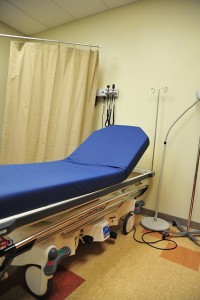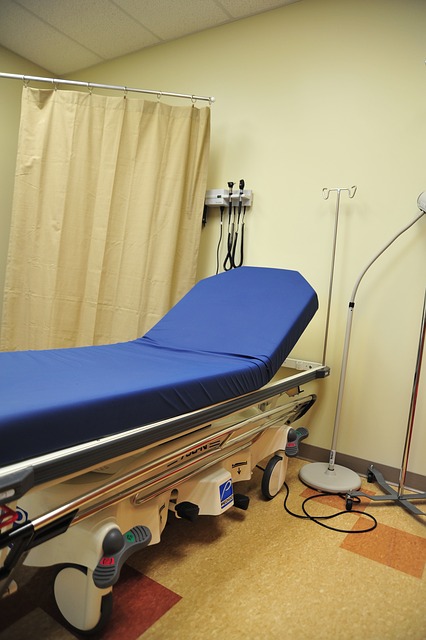
Diabetes patients with abnormal blood sugar levels had longer, more costly hospital stays than those with glucose levels in a healthy range, according to studies presented by Scripps Whittier Diabetes Institute researchers at the 75th Scientific Sessions of the American Diabetes Association (ADA), which ended June 9 in Boston.
The findings come as more patients are being admitted into U.S. hospitals with diabetes as an underlying condition.
A recent UCLA public health report indicated that one of every three hospital patients admitted in California has a diagnosis of diabetes.
At the same time, changing health care payment models are increasing pressure on health systems to reduce costs while improving patient outcomes.
‘Data from the new studies suggest poorly controlled blood sugar readings could serve as a marker for better managing the care of patients with diabetes both during their hospital stays and after they have been discharged,’ said Athena Philis-Tsimikas, M.D., an endocrinologist, corporate vice president of the Scripps Whittier Diabetes Institute and co-author of the papers presented at the ADA conference.
‘Our research supports having more caregivers in the hospital and clinic settings who are focused on identifying these patients and working to make sure their diabetes is properly managed,’ she said.
Continue Reading Below ↓↓↓
For the first study, researchers used data for 9,995 patients with diabetes who were admitted to all Scripps Health hospitals in San Diego county between 2012 and 2013 and underwent blood sugar monitoring during their stays.
After controlling for age and gender, patients with poor glucose control (one or more readings exceeding 400 mg/dL) had significantly longer hospital stays averaging 8.50 days than those with good glucose control (readings ranging between 70 and 199 mg/dL) who had stays averaging 5.74 days. Total hospitalization costs for patients with poor glucose control averaged $16,382, while costs for patients with good blood sugar control averaged $13,896.
The second study examined blood sugar data for 2,024 patients with diabetes who were admitted to Scripps Memorial Hospital Encinitas between 2009 and 2011.
After adjusting for patient demographics, admitted medical conditions and severity of illness, those who experienced high glucose readings (greater than 180 mg/dL) or low glucose readings (below 70 mg/dL) had significantly longer stays and incurred higher total costs when compared with patients whose glucose levels remained in normal ranges during their hospitalization.
A third study looked at diabetes patients receiving care at two Scripps Coastal Medical Center ambulatory clinics in San Diego county. At one clinic, 236 patients (the intervention group) received conventional support along with care from a multidisciplinary team that included a nurse care manager, a nurse focused on managing patient depression and a health coach. At the other clinic, another 238 patients served as a comparison group, receiving only conventional support during the same period.
Over 12 months, the percentage of all intervention group patients with good control of glycated hemoglobin (HbA1c), which is a risk indicator for developing diabetes-related conditions, increased significantly from 75.8 to 91.8. At the same time, the percentage of patients in the comparison group with good control of HbA1c rose only slightly from 77.3 to 79.2.
Among a subset of interventional group patients with moderate or high risk of developing diabetes-related complications, the percent with good control of HbA1c increased from 63.5 to 90.2.
Taken together, the research supports efforts by Tsimikas for more than 15 years to imbed multidisciplinary teams focused on diabetes care and management in clinics and hospitals.
‘We don’t have enough physicians who can care for every patient for the amount of time required,’ she said. ‘Surrounding doctors with a specialized care team lets them provide more effective care to patients with diabetes, operate more efficiently and deliver improved outcomes.’
The Scripps Whittier Diabetes Institute’s Project Dulce is one example of how this approach can work. Through a collaboration with San Diego county and several other partners, multidisciplinary care teams that include registered dietitians, health coaches and trained peer educators provide clinical care and management for diabetes patients in federally qualified community health centers throughout San Diego county.
Continue Reading Below ↓↓↓
Multiple studies have found the Project Dulce program to be associated with improvements in health status and quality of life, a decreased incidence of diabetes-related complications and hospitalizations, and lower hospital and emergency department care costs.
Co-authors of the studies presented at the ADA conference included Addie L. Fortmann, Ph.D., research scientist; Laura Talavera, R.N., C.N.S., manager of inpatient diabetes services; Deborah Sims, project management analyst; Nakiya Davis, project manager; Chris Walker, M.P.H., senior director of diabetes services; Kelly Barger, R.D., C.D.E., diabetes education supervisor; Maire Robacker, R.N., C.N.S., C.D.E.; Cindy Garvey, R.N., C.D.E., diabetes educator; Christine Strohmeyer, M.D.; Louis Hogrefe, M.D.; Robin Morrisey, R.N., N.P., manager of outpatient diabetes services; and Clinton Desmond, data manager.
Source: Scripps Health











